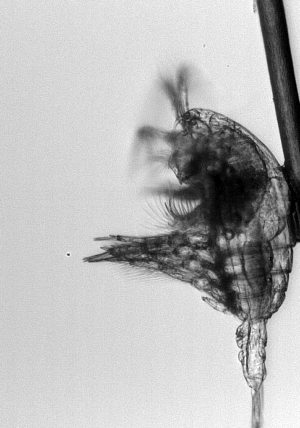In a new paper, Ocean Life researchers use direct observations of predator-prey interactions to study the defensive benefit of colony formation in four species of phytoplankton.
Many phytoplankton form colonies of different size and shapes that allow them to cover a wide size spectrum compared to that of their single cells. Zooplankton, the predators of phytoplankton, often have size-limited prey spectrum and, thus, the formation of colonies by some phytoplankton can be interpreted as an anti-predator response. Large chains of diatoms are efficiently handled and consumed by copepods, whereas larger spherical colonies of Phaeocystis globosaare rejected. In contrast, colonial phytoplankton are better protected against microzooplankton grazers, since these are only managed to consume smaller colonies. The efficient protection against microzooplankton grazers with high growth potential during the early phase of a bloom in fact allows bloom formation, and this advantage is higher than the associated cost of elevate susceptibility to larger grazers, whose numerical response is much lagged.
In addition to studying the defensive benefits of colony formation we describe, for the first time, a novel mechanism by which the copepod Temora longicornis may capture colonial prey. When a colony comes into contact with the first antennae, the copepod uses the antennae as a lasso to swing the prey into the feeding current where it can be handled by the feeding appendages.
Read the paper here: https://www.frontiersin.org/articles/10.3389/fmars.2022.829419/
Ryderheim F, Hansen PJ, and Kiørboe T. (2022) Predator field and colony morphology determine the defensive benefit of colony formation in marine phytoplankton. Front. Mar. Sci. 9: 829419. doi: 10.3389 / fmars.2022.829419

A Thalassiosira nordenskioeldii diatom chain comes into contact with the antennae of T. longicornis. The copepod swings the antennae to successfully capture the chain.